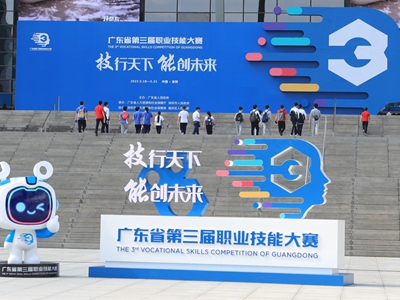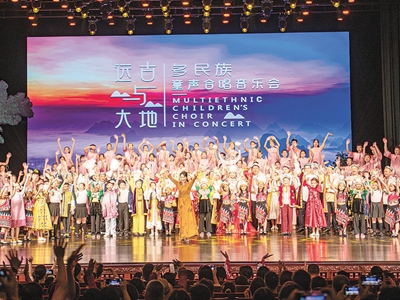Nanshan seizes development opportunity in Greater Bay Area
Writer:

THE development of the Guangdong-Hong Kong-Macao Greater Bay Area has drawn a lot of attention in China and abroad since Premier Li Keqiang outlined a plan for it in his government work report at the fifth plenary session of the 12th National People’s Congress.
The Greater Bay Area covers Hong Kong, Macao and nine cities in Guangdong Province, including Guangzhou and Shenzhen, two of the four first-tier cities on the Chinese mainland. Aimed at pushing forward the cooperation between the mainland, Hong Kong and Macao, the Greater Bay Area plan will give full play to the unique advantages of Hong Kong and Macao, and elevate their positions and roles in the country’s economic development and opening up.
The Greater Bay Area occupies less than 1 percent of the country’s land area and its population accounts for less than 5 percent of the total. However, it created 13 percent of the nation’s GDP in 2015.
Shenzhen is located in a strategic area of the Greater Bay Area and Maritime Silk Road. Nanshan District, surrounded by Shenzhen Bay and Qianhai Bay and located in the golden estuary of the Greater Bay Area, is a pearl in the crown of the Pearl River Delta city cluster.
In 2016, the total GDP of the Greater Bay Area was 9.35 trillion yuan (US$1.4 trillion). Among the “9+2” cities in the Greater Bay Area, Shenzhen ranked third by generating 1.95 trillion yuan in GDP last year, with a year-on-year growth of 9 percent. The GDP of Nanshan District reached 384.2 billion yuan last year, ranking first among all districts and counties in the province and third in the country.
Advantages
The most representative world-class bay areas around the world, such as the New York Bay Area, San Francisco Bay Area and Tokyo Bay Area, are all financial centers typically characterized by leading innovative capacity and prominent hub position. Like San Francisco, Shenzhen is dominated by the high-tech and financial industries, while emerging industries are also developing rapidly in the city.
Currently, Shenzhen has 8,037 State-level high-tech enterprises, accounting for 40 percent of the total in Guangdong Province. The city plans to increase the proportion of R&D investment in GDP to 4.25 percent by 2020, while over 10,000 State-level high-tech enterprises are expected to settle in the city by then.
In 2016, Nanshan District contributed a quarter of the PCT international patent applications in the country, with the total number surpassing 10,000 applications. The district won 12 national science and technology awards last year, and two Nobel laureate labs are now based in Nanshan.
The financial centers across the globe are mostly situated in bay areas, such as Canary Wharf in London, Wall Street in New York, Central in Hong Kong and Lujiazui in Shanghai. The Shenzhen Bay Financial Industry Belt in Nanshan District, located in the central zone of the Guangdong-Hong Kong-Macao Greater Bay Area, boasts the distinct characteristics of a bay area as well as abundant heartland resources.
The Financial Headquarters Base in Houhai, which adjoins the coastal leisure belt that spans 15 kilometers along Shenzhen Bay, is endowed with advantageous geological conditions. A number of enterprises, such as China Railway Engineering Corp., have settled their headquarters buildings in the area near Shenzhen Bay Sports Center and other cultural and sports facilities.
In early 2017, China Merchants Bank won the bid for a piece of land in the Headquarters Base of Shenzhen Bay to construct a headquarters building. Another project under construction in the area is CITIC Financial Center, which will be used as the global management headquarters of CITIC Securities.
According to the district government’s plan, Houhai, Shenzhen Bay Area, Qianhai and Shekou will coordinate their development and work together to construct a strategic highland in the Greater Bay Area.
Future plan
The city government has vowed to build Shenzhen into a world-class scientific and industrial innovation center. In a bid to achieve the goal, Nanshan District is planning to press ahead with the integration of finance and technology in order to provide the motivation to boost innovation development in Shenzhen.
In 2016, the added value of the financial industry in Nanshan District reached 27.5 billion yuan, increasing by 15.4 percent compared with 2015. By the end of last year, over 51,000 financial enterprises were registered in Qianhai.
Nanshan District has established a “Financial Street” along Keyuan Road (科苑路) and Keyuan Road (科园路) in recent years. Currently, there are three financial parks licensed by the district government and over 50 financial agencies based on Keyuan Road (科苑路). Meanwhile, over 20 banks, securities firms and other financial agencies, as well as nearly 40 incubators and public service platforms, are located on Keyuan Road (科园路).
During the district’s “two sessions” this year, the district’s Party chief, Wang Qiang, said Nanshan District should seize the development opportunity in the Greater Bay Area. He said the district should spare no effort in upgrading its industrial chain, innovative chain and value chain, and should plan its future by thinking outside the box.
At the end of last year, a financial development service office was set up in Nanshan, which has worked as a supervisor of the district’s financial industry. A number of financial organizations and research institutes, such as the financial research institute of Sun Yat-sen University, have settled in the district.
According to the district government’s plan, Nanshan District will continue to upgrade its financial industry by improving the industrial chain this year. The added value of the financial industry in Nanshan is expected to reach 32 billion yuan by the end of this year, up by 16 percent compared with last year. The district government is also mulling new measures and supporting policies to promote the development of the district’s financial industry.











